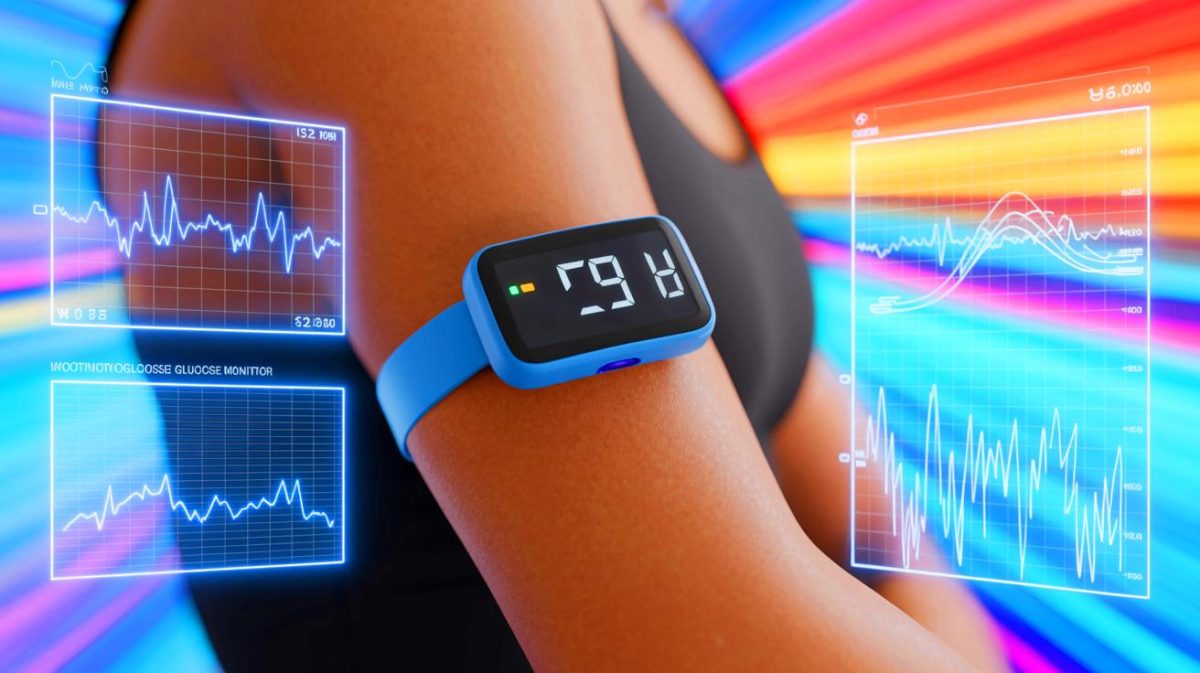| IN A NUTSHELL |
|
The latest developments in diabetes research reveal a promising shift away from traditional diagnostic methods. A new study from the University of Tokyo highlights the potential of Continuous Glucose Monitoring (CGM) technology to detect early signs of diabetes with greater accuracy than the standard blood tests. This innovation marks a significant leap in the realm of non-invasive testing, offering a glimpse into a future where managing and preventing diabetes becomes simpler and less painful. The implications of this research not only challenge existing medical practices but also pave the way for more accessible and effective healthcare solutions.
Advancements in Continuous Glucose Monitoring
Continuous Glucose Monitoring (CGM) represents a breakthrough in the field of diabetes care, offering a non-invasive alternative to traditional blood tests. Unlike conventional methods that require painful needle pricks, CGM technology provides a real-time analysis of glucose levels throughout the day. This innovation is particularly beneficial for individuals who need to monitor their blood sugar levels consistently.
The research conducted by the University of Tokyo involved 64 participants who had no prior diagnosis of diabetes. These individuals were equipped with CGM devices to track their glucose fluctuations. The data collected offered deeper insights into their glucose regulation capabilities, providing a comprehensive view of their metabolic health. This approach underscores the potential of wearables in transforming how we understand and monitor diabetes risk.
Understanding the Impact on Preventive Healthcare
The University of Tokyo’s study introduces a new model that combines AC_Var, a measure of glucose level fluctuations, with standard deviations to enhance prediction accuracy. This model significantly outperforms traditional diabetes markers like fasting blood glucose and HbA1c in forecasting the disposition index, which is crucial for identifying early signs of impaired glucose regulation.
By utilizing this advanced algorithm, researchers can detect individuals with potential glycemic control issues even when standard tests indicate normal results. This early detection capability not only allows for timely preventive measures but also significantly improves overall diabetes management. The research team’s efforts have culminated in a user-friendly web application designed to make this technology accessible to both healthcare providers and patients, further revolutionizing preventive care.
Challenges and Benefits of Non-Invasive Testing
While the benefits of CGM technology are clear, the transition from traditional methods presents several challenges. One of the primary concerns is ensuring the accuracy and reliability of the data collected by these devices. However, the study’s findings suggest that CGM technology, combined with the new algorithm, offers a more precise alternative to existing diagnostic methods.
The non-invasive nature of CGM devices eliminates the need for frequent and often painful blood draws, making it a more comfortable option for patients. Furthermore, the ability to continuously monitor glucose levels provides a dynamic view of an individual’s metabolic health, enabling more tailored and effective treatment plans. This shift towards non-invasive testing marks a pivotal moment in diabetes care, emphasizing the importance of early detection and preventive intervention.
Future Directions in Diabetes Research
The University of Tokyo’s research opens new avenues for diabetes screening and management. By providing a practical tool for early detection, the study aims to prevent or delay the onset of diabetes and its complications. The implications of this research extend beyond individual patient care, potentially influencing public health policies and strategies.
The researchers emphasize the importance of making this technology widely available, advocating for its integration into routine healthcare practices. As the study gains recognition, it sets the stage for further exploration into the applications of CGM technology. How will this innovation shape the future of diabetes care, and what other areas of medical research could benefit from similar breakthroughs? The possibilities are endless, and the need for continued exploration and development remains crucial.
As continuous glucose monitoring technology continues to evolve, it promises to redefine our approach to diabetes detection and management. The University of Tokyo’s study is a testament to the power of innovation in healthcare, highlighting the critical role of technology in improving patient outcomes. What other groundbreaking advancements could we expect in the fight against diabetes, and how might they transform the landscape of preventive healthcare?
Did you like it? 4.5/5 (27)







Wow, this is amazing! Can’t wait to see how it changes diabetes management. 😊
Finally, a non-invasive way to keep track of glucose levels! Thank you, University of Tokyo!
Could this technology really replace traditional blood tests in the future?
Sounds promising, but how expensive will these wearables be?
I’m a bit skeptical about the “unmatched accuracy” claim. How reliable is the data?
This could be a game-changer for people with diabetes. Kudos to the researchers!
What about the privacy of the data collected by these wearables?
Great to see technology making healthcare more accessible and less painful. 😊
Hope this doesn’t end up being just another fad. We need real solutions!
How soon can we expect these devices to be widely available?